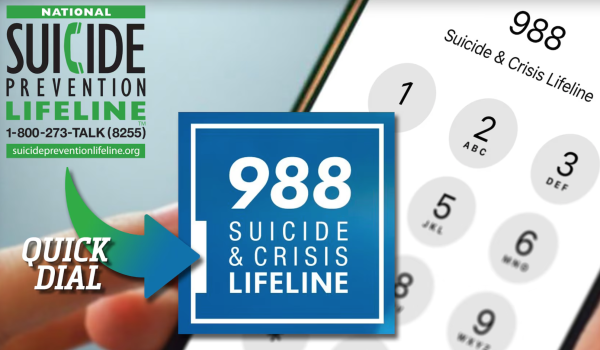A Resource in Times of Crisis
How 988 Is Transforming Mental Health Support in the U.S.
Introduced in 2022, the 988 Suicide and Crisis Lifeline is the official mental health and suicide crisis line of the U.S. government. The three-digit number connects users, via phone, text, or chat, to a network of over 200 local and state-funded crisis call centers, providing access to the 988 Suicide & Crisis Lifeline for crisis counseling, resources, and referrals.
The Lifeline was launched as a result of the National Suicide Hotline Designation Act of 2020. This act designated 988 as the universal telephone number for the national suicide prevention and mental health crisis hotline system, encompassing both the National Suicide Prevention Lifeline and the Veterans Crisis Line.
Since its introduction, usage of the line has been notable. From July 2022 to December 2024, 988 received over 16 million contacts, primarily through calls, texts, and chats. Nationally, the lifetime incidence rate of 988 contact was 48.9 per 1000 population, with varying rates observed regionally and across states.
Regional differences showed increased participation in the West compared to the South, possibly influenced by socio-political factors. This difference may stem from differing levels of stigma surrounding seeking mental health support in Southern states.
Rising Suicide Rates: How 988 is Helping
Suicide rates have risen due to several overlapping factors. Economic and social stressors have adverse effects on anxiety and depression. Social isolation—worsened by less face-to-face interaction and more digital communication—is increasingly affecting the younger Gen Z population who rely on virtual forms of communication regularly.
Since launching in July 2022, the 988 Lifeline has handled over 10.8 million calls, texts, and chats. Monthly contact volume continues to rise, reaching over 500,000 in May 2024—an 80% increase since May 2022. Despite growing demand, national answer rates have improved and wait times have shortened, although some of these gains slipped in 2023. To support growing demand, ten states have implemented telecom fees to fund local crisis centers more sustainably.
Ongoing developments include georouting improvements, expanded mobile crisis services, new stabilization facilities, better tech infrastructure, and specialized support for high-risk populations. While national 988 data remain limited, some states have launched public dashboards to better track progress and inform suicide prevention efforts.
From Awareness to Impact
The 988 Suicide & Crisis Lifeline has significantly impacted mental health support in the US, increasing access to crisis care and improving outcomes for callers. Since its launch in July 2022, 988 has seen a substantial rise in call volume, with trained counselors connecting callers to immediate support and local resources. Studies indicate that callers feel less suicidal, depressed, and overwhelmed after interacting with a 988 counselor.
Everyone has a role to play in making 988 more effective. You can help by sharing what 988 is and how it works—with friends, family, coworkers, and on social media. Rising suicide rates are a public health emergency. Raising awareness about 988 isn’t just helpful—it can save lives.



